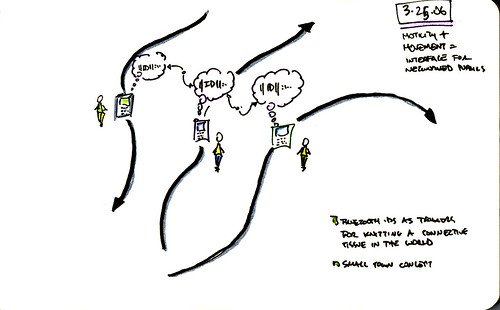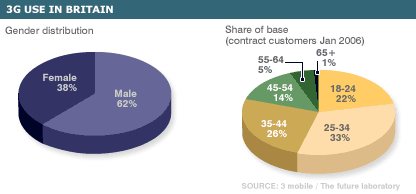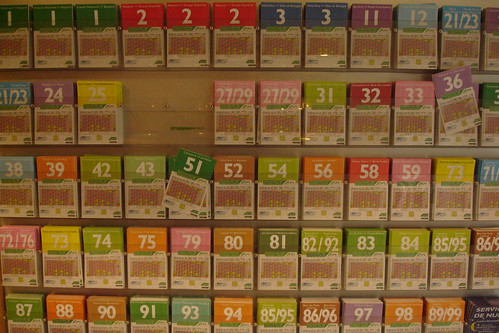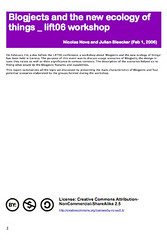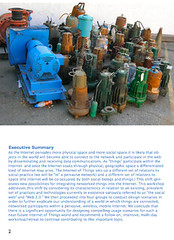I am just coming back from a round-up quick tour around the South Bay over the last two days. I came up here to San Jose at the invitation of Jyri Salomaa from Nokia, Beijing, who is the Research Manager for Asian Mobile Gaming at Nokia. Jyri invited a few of us out to dinner to discuss the mobile projects going on at academic research labs. It was a brainiac supper with Jyri, Frank Lantz from area/code, Ville-Veikko Mattila, a Research Manager for Game Technologies at Nokia in Helsinki, Elina M.I. Koivisto, a Research Engineer, Game House (can I play there??) at Nokia Research Center in Tampere Finland, and Ian Bogost, from Persuasive Games and Georgia Tech. We ruminated on Spore (a year out??), styles of mobile games, and eagerly thumbed through Ian’s recently released book, which looks really lovely — and has citations to Zizek, at least. I’ll have to Amazon Prime that one.
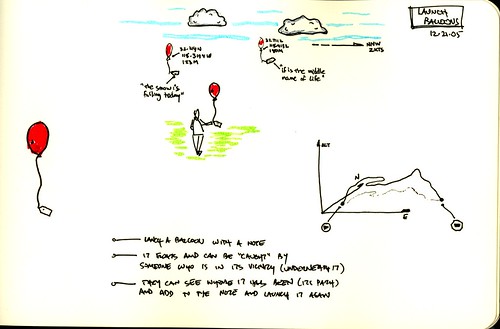 />
/>
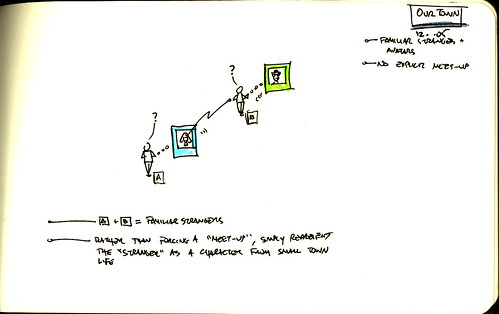
I presented to Jyri a few of the mobile game “sketches” I’ve been working on, hoping to test the interest of these brainiacs in a ludic style of casual, mobile play experiences that aren’t about thumb twitching or entirely face-down experiences. But, one’s that are more deliberately designed to provoke looking at our mobile/place-based activities in a different light. To look at the world around us, including people and Things, in a different way. This style — maybe I’ll call it motility games or motile play — is more about movement and refashioning how we conceptualize space and time than just trying to level up on a mobile device port of Prince of Persia.
Hopefully, these concepts and the approach to mobile play and mobile designed experiences I pitched will help start a relationship between Nokia and the Mobile and Pervasive Lab.
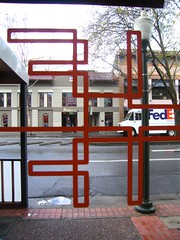
Earlier on Monday, I went to the Institute for the Future to give a lunch time talk to IFTF researchers and some clients of theirs who happened to be there. It was a bit of an overview of research activities that I have been conducting at the Annenberg Center for Communication under the category of mobile and pervasive..stuff. I showed this Viewmaster of the Future thing that Michael Naimark inspired me to think through. I also showed, and demoed, Clckr!, which worked even though its in a super alpha state (but..maybe it working for a bunch of people means it’s no longer “alpha”..) I also talked about the recent report on Blogjects and networked things that Nicolas and I put together from our workshop in Geneva on Blogjects, networked Things and such all. There was a good deal of interest in this topic of networked Things and we had a good discussion about the implications as well as concerns about how a world of pervasive networked objects would address the concerns that many people have around surveillance, security, etc. It’s an interesting thread to consider how technologies with lots of potent threats to identity theft, surveillance and such move through registers of acceptance and acclimation. I don’t have any answers, but the insights I offered were to look at historical analogies — for instance, although the RFID is not all that the Internet of Things is about by any means, it has become the poster child. Looking at RFID as the progeny of UPC codes, barcodes, etc., would provide some helpful insights into how such things move from troubling and of-concern, to routine and accepted. What are the policy, legal, cultural, social practice transitions points through which barcodes and mag stripes went, or are going through, as they become routinized? One speculation I had was that the “digital kids” would be well-acclimated to having their identities disseminated and distributed, partly by virtue of their having done such on their own terms through online social spaces, like MySpaces. Have to bounce this by danah..
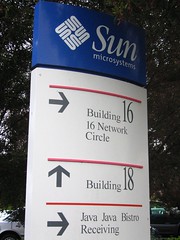
With some spare time between this and that, I pinged Rob Tow, a researcher at Sun Microsystems, husband to noted designer-artist Brenda Laurel (who has an exciting sounding book out that I somehow missed called Design Research: Methods and Perspectives that I just Amazon Primed). Rob had 60 minutes to spare, so I booked it so we could talk about the new “version e” Sunspots. These little peepers are an exciting sensor platform that is definitely going in the quiver of Blogject/Spimey instrumentalities.
Check out this video of the Sunspot’s version of “Hello World” — “tilting” a runner of LEDs back and forth between two units. Cool stuff..
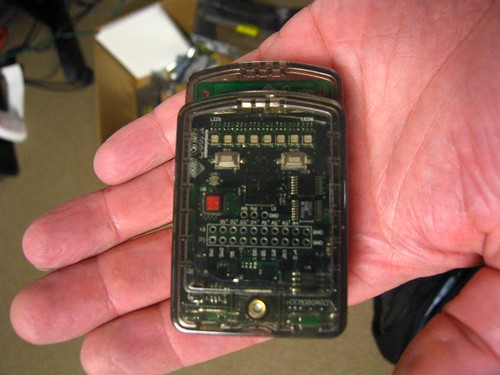
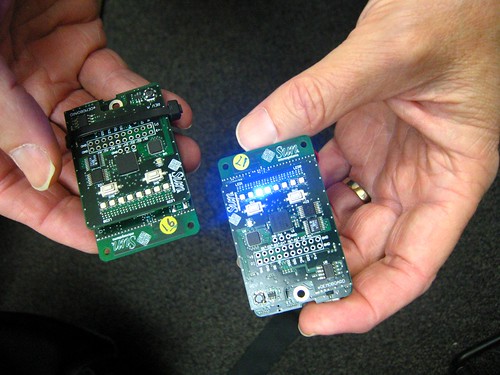
Here’s what they pack:
A Sun SPOT device is built by stacking a Sun SPOT processor board with a sensor board and battery.
Sun SPOT Processor Board
* 180 MHz 32 bit ARM920T core – 512K RAM/4M Flash
* 2.4 GHz IEEE 802.15.4 radio with integrated antenna
* USB interface
* 3.6V rechargeable 750 mAh lithium-ion battery
* 48 uA deep sleep mode
General Purpose Sensor Board
* 2G/6G 3-axis accelerometer
* Temperature sensor
* Light sensor
* 8 tri-color LEDs
* 6 analog inputs
* 2 momentary switches
* 5 general purpose I/O pins and 4 high current output pins
Software
* Squawk Virtual Machine
o Fully capable J2ME CLDC 1.1 Java VM with OS functionality
o VM executes directly out of flash memory
o Device drivers written in Java
o Automatic battery management
* Developer Tools
o Use standard IDEs. e.g. NetBeans, to create Java code
o Use SPOTWorld to manage and deploy applications to sets of Sun SPOTs
o Integrates with J2SE applications
o Sun SPOT wired via USB to a computer acts as a base-statio
One of the goals of the project was to create a really legible platform for Thing-y behavior and usage experimentation. By legible, I mean that this is something that someone with little exposure to microcontrollers should be able to work with — a 14 year old high school student, for instance. Plus, it should have a robust set of interfaces to the physical world so as to support a diversity of experiments without having to add lots of things to the package, write software interfaces for extra hardware, etc. It should be well-suited to the dynamics of Thing-y semantics — movement, proximity, touch, etc. So, this built-in three-axis accelerometer, 802.15 radio, LEDs, buttons and compact, small size are a really exciting thing.
Now, some might think that the package is “expensive” — $499 for two Sunspots and a base station. There’s a whole lot in there — way more than what you would expect, and a lot more than what you’d get out of just one Crossbow Stargate. I put expensive in scare quotes because it’s both a lot of money for a 14 year old high school student and not so much money for the functionality, let alone the parts. (Rob reminded me that Sun sells these for the cost of goods. That’s pretty cool.) If you wanted to add a three-axis accelerometer, 802.15 radio, a rail of cool 24bit(!) LEDs, etc. to a PIC or BS2, I suspect you’d easily approach a third of this price point..easily — never mind the friggin’ headaches and time you’d invest in sourcing components, getting them to work, burning out a few and, basically, not getting your project goals accomplished. I’m in..
Rob and his colleague told me about one usage scenario they patented for the Sunspots — it addresses a package transportation problem. The parcel or container that “falls off the truck” and looses itself. If you have a swarm of Sunspots all intercommunicating, and able to determine that they’re in motion, bouncing around on a shipping vessel or truck — if one starts bouncing differently or begins to fall out of the swarm, then something’s gone wrong — it’s probably “fallen off the truck.” You can tag the spot and drop a note to whoever cares about such things in real time. This reminded me of something Nicolas recently pointed out to me — RFTrax, which provides, evidently, a variety of sensors to manage all the vagaries of shipping and transport industries (Our sensors have among the lowest power requirements in the industry. They’re built to weather the harshest environments, fit in the smallest areas and operate in the most remote locations. And they’re designed to be modular, scalable, plug-and-play and hot-swappable. All of this dramatically extends system life, reduces maintenance and eases implementation and expansion.)
Last but not least, I swung by GDC for a few hours, mostly to follow up with Nokia and sit on some Wifi, but I got to see a bunch of people who were milling about — Kellee, Rik, Mike showing off the lovely Cloud Game. Ran into Zimmerman, Larry and Austin from MTV Online Games and Stephanie.
Technorati Tags: blogjects, spimes, SunSpots, theory object
